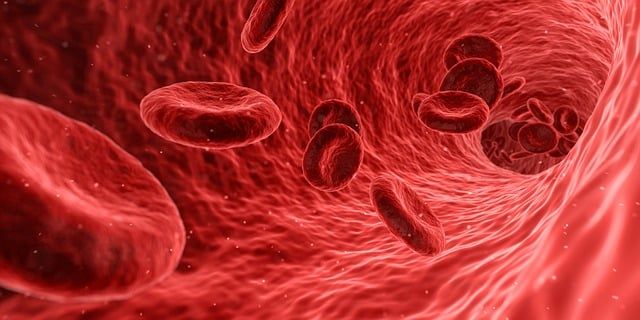Understanding and Combating Oxidative Stress for a Healthier Life
Oxidative stress is a term that is often used in discussions about health and wellness. Many experts agree that understanding and combating oxidative stress is crucial for maintaining a healthier life. This article will delve into the science behind oxidative stress, its impact on health, how to detect it, strategies to combat it, and the role of antioxidants in managing it.
ALT TXT IMG: A woman doing a yoga pose promoting healthy living
What is Oxidative Stress?
Oxidative stress occurs when there is an imbalance between the production of reactive oxygen species (ROS) and the body’s ability to neutralize them with antioxidants. ROS are highly reactive molecules that contain oxygen and can damage important cellular components, such as DNA, proteins, and lipids. When this damage occurs, it can lead to a variety of health problems.
Oxidative stress is a complex biological process that affects various systems in the body. It plays a significant role in the development of numerous diseases, including cardiovascular diseases, neurodegenerative disorders, and cancer. Understanding the science behind oxidative stress is crucial to comprehend its impact on human health.
The Science Behind Oxidative Stress
To understand oxidative stress, you must first grasp the concept of free radicals. Free radicals are unstable molecules that are highly reactive due to the presence of unpaired electrons. They are produced as byproducts of normal bodily functions, such as metabolism and immune response. When free radicals accumulate in excessive amounts, they can cause damage to cells and tissues, leading to oxidative stress.
The body’s natural antioxidant defense system becomes overwhelmed during oxidative stress, resulting in an imbalance. Antioxidants are molecules that can donate electrons to stabilize free radicals. They act as a defense mechanism to neutralize ROS and prevent them from causing further damage. However, when the production of ROS exceeds the body’s antioxidant capacity, oxidative stress occurs.
One of the most damaging effects of oxidative stress is the oxidative damage to DNA. When DNA is damaged, it can lead to mutations and genetic instability, which are key factors in the development of cancer. Additionally, oxidative stress can also impair the function of proteins, which are essential for various biological processes in the body. Furthermore, oxidative stress can cause lipid peroxidation, a process where lipids are attacked by free radicals, resulting in the production of harmful byproducts that can damage cell membranes and contribute to the development of cardiovascular diseases.
Common Causes of Oxidative Stress
Several factors contribute to the development of oxidative stress. Environmental pollutants, such as cigarette smoke, air pollution, and radiation, can increase the production of ROS. These pollutants are present daily and can lead to chronic exposure, significantly contributing to oxidative stress.
In addition to environmental factors, lifestyle choices also play a crucial role in the generation of free radicals and oxidative stress. A poor diet high in processed foods and unhealthy fats can contribute to oxidative stress. These types of foods lack essential nutrients and antioxidants, leaving the body more vulnerable to the damaging effects of ROS.
Furthermore, chronic inflammation, which is a common underlying factor in many diseases, can also lead to oxidative stress. Inflammatory processes in the body produce ROS as a defense mechanism, but when inflammation becomes chronic, the production of ROS can exceed the body’s antioxidant capacity, resulting in oxidative stress.
Physical inactivity is another factor that can contribute to oxidative stress. Regular exercise has been shown to increase the production of antioxidants in the body, helping to counteract the effects of ROS. However, a sedentary lifestyle can decrease antioxidant production, leaving the body more susceptible to oxidative stress.
Excessive alcohol consumption is yet another cause of oxidative stress. Alcohol metabolism produces ROS as a byproduct, and excessive drinking can overwhelm the body’s antioxidant defense system, leading to oxidative stress and potential damage to various organs, such as the liver.
In conclusion, oxidative stress is a complex phenomenon that occurs when there is an imbalance between the production of reactive oxygen species and the body’s ability to neutralize them with antioxidants. Understanding the science behind oxidative stress and the factors that contribute to its development is essential for maintaining optimal health and preventing the onset of various diseases.
ALT TXT IMG: Hands of two elderly people, displaying signs of aging such as wrinkles and age
The Impact of Oxidative Stress on Health
Oxidative stress has been linked to various health conditions and can have a detrimental impact on overall well-being. It occurs when there is an imbalance between the production of free radicals and the body’s ability to neutralize them with antioxidants.
Free radicals are highly reactive molecules that can damage cells and tissues. They are produced as byproducts of normal cellular processes, such as metabolism, but can also be generated by external factors like pollution, smoking, and UV radiation.
Oxidative Stress and Aging
As you age, your body naturally produces fewer antioxidants, resulting in a gradual decline in your defense against free radicals. This decline can lead to increased oxidative damage to cells and tissues, contributing to the aging process.
Oxidative stress has been associated with age-related conditions such as cardiovascular diseases, neurodegenerative disorders, and vision problems. For example, in cardiovascular diseases, oxidative stress can promote inflammation and damage the lining of blood vessels, leading to the development of atherosclerosis.
In neurodegenerative disorders like Alzheimer’s and Parkinson’s disease, oxidative stress can contribute to the accumulation of abnormal proteins and the death of brain cells. Vision problems, such as cataracts and age-related macular degeneration, have also been linked to oxidative stress-induced damage to the eye’s tissues.
Oxidative Stress and Chronic Diseases
Research has shown that oxidative stress plays a significant role in the development of chronic diseases. Conditions such as diabetes, cancer, cardiovascular diseases, and autoimmune disorders have been linked to increased oxidative stress. In diabetes, oxidative stress can impair insulin signaling and contribute to the development of insulin resistance. This can lead to elevated blood sugar levels and the progression of diabetes-related complications.
Cancer is another disease where oxidative stress is implicated. Free radicals can damage DNA and other cellular components, leading to mutations that can initiate the development of cancerous cells. Additionally, oxidative stress can promote tumor growth and metastasis by creating an environment that supports angiogenesis and immune evasion.
In autoimmune disorders, oxidative stress can contribute to the breakdown of self-tolerance, leading to an inappropriate immune response against the body’s tissues. This can result in chronic inflammation and tissue damage.
Furthermore, oxidative stress has been associated with the development and progression of cardiovascular diseases, such as atherosclerosis, hypertension, and heart failure. It can promote the formation of plaques in blood vessels, increase blood pressure, and impair heart function.
In conclusion, oxidative stress is a significant factor in various health conditions, contributing to the aging process and the development of chronic diseases. Understanding the mechanisms behind oxidative stress and finding ways to mitigate its effects are important for maintaining optimal health and well-being.
Detecting Oxidative Stress
Recognizing the signs of oxidative stress can help individuals take proactive steps to improve their health and well-being. Oxidative stress is a condition that occurs when there is an imbalance between the production of free radicals and the body’s ability to neutralize them with antioxidants. Free radicals are highly reactive molecules that can cause damage to cells and tissues if left unchecked. This damage can contribute to the development of various health problems, including chronic diseases.
The symptoms of oxidative stress can vary from person to person and depend on the severity of the imbalance. Common symptoms include fatigue, frequent infections, memory problems, muscle and joint pain, and an increased susceptibility to chronic diseases. Fatigue, for example, can be a result of increased oxidative damage to mitochondria, which are responsible for producing energy in our cells. Frequent infections can occur because oxidative stress weakens the immune system, making it harder for the body to fight off pathogens.
If you experience any of these symptoms, it is essential to consult with a healthcare professional to determine if oxidative stress is a contributing factor. They can perform a thorough evaluation and recommend appropriate interventions to address the underlying imbalance.
Medical Tests for Oxidative Stress
Various medical tests can assess oxidative stress levels in the body. These tests may measure specific antioxidants, such as glutathione and vitamin C, or evaluate markers of oxidative damage, such as lipid peroxidation.
Glutathione is a powerful antioxidant that plays a crucial role in neutralizing free radicals and protecting cells from oxidative damage. Low levels of glutathione can indicate increased oxidative stress. Vitamin C, another potent antioxidant, is also commonly measured to assess oxidative stress. It helps regenerate other antioxidants and plays a vital role in maintaining the health of various body systems.
Lipid peroxidation is a process that occurs when free radicals attack the lipids (fats) in cell membranes, leading to cell damage. Measuring markers of lipid peroxidation, such as malondialdehyde (MDA), can provide valuable insights into the extent of oxidative damage in the body.
Your healthcare provider can recommend the most appropriate tests based on your circumstances. They will consider factors such as your medical history, symptoms, and overall health to determine the most effective approach to assessing and managing oxidative stress.
It is important to note that while medical tests can provide valuable information, they are just one piece of the puzzle. Lifestyle factors, such as diet, exercise, and stress management, also significantly reduce oxidative stress and promote overall health. By adopting a healthy lifestyle and working closely with a healthcare professional, individuals can take proactive steps to detect and address oxidative stress, leading to improved well-being and quality of life.
Strategies to Combat Oxidative Stress
Fortunately, there are several strategies that individuals can implement to combat oxidative stress and promote a healthier life.
Dietary Changes to Reduce Oxidative Stress
A well-balanced diet rich in antioxidants can play a significant role in reducing oxidative stress. Including colorful fruits and vegetables, whole grains, lean proteins, and healthy fats in your diet can provide a wide range of antioxidants. Foods such as berries, leafy greens, nuts, and seeds are particularly rich in antioxidants. Additionally, reducing the intake of processed foods, sugary drinks, and unhealthy fats can help minimize oxidative stress.
Lifestyle Modifications to Counteract Oxidative Stress
Making certain lifestyle modifications can also help combat oxidative stress. Engaging in regular physical activity has been shown to increase the production of endogenous antioxidants and reduce oxidative stress. Managing stress levels through practices such as meditation, yoga, and deep breathing exercises can also be beneficial. Adequate sleep is crucial for overall well-being and can help support antioxidant defense mechanisms in the body.
Role of Antioxidants in Managing Oxidative Stress
Antioxidants are crucial in managing oxidative stress and promoting a healthier life.
“Eating plenty of colorful vegetables and fruits protects against heart disease, diabetes, and cancer. One major reason is that these foods complement the body’s natural antioxidant defenses with antioxidant vitamins, carotenoids, and polyphenols.” Joel Fuhrman, M.D.
Understanding Antioxidants
Antioxidants are substances that can neutralize free radicals and prevent or repair oxidative damage to cells. They can be obtained from various sources, including fruits, vegetables, nuts, and seeds. Common antioxidants include vitamins C and E, beta-carotene, selenium, and flavonoids. Including a wide variety of antioxidant-rich foods in your diet can help ensure an adequate intake of these essential compounds.
Incorporating Antioxidants into Your Diet
Incorporating antioxidants into your diet can be as simple as adding a handful of berries to your breakfast, snacking on nuts and seeds, and including a variety of colorful fruits and vegetables in your meals. Additionally, you may consider supplementation if your healthcare provider deems it necessary. For example, you can supplement your diet with Accuri® Vitality Boost for a healthier life.
Conclusion
Understanding and combating oxidative stress is crucial for a healthier life. By knowing the science behind oxidative stress, recognizing its impact on health, detecting its presence, implementing strategies to combat it, and incorporating antioxidants into our diets, we can take proactive steps toward reducing oxidative stress and promoting overall well-being. By making these lifestyle changes, you can work towards achieving a healthier life with less oxidative stress and its associated health risks.
Lastly, if you’re interested in going deeper on health-related content, here are a few of our recent posts that you may want to read:
- Why Optimized, Precision Medicine is the Future
- Andrew Huberman is Wrong About NAD, NAD+ precursor & Longevity
- 9 Powerful Benefits of Optimizing Your NAD
- What Does Peak Performance Look Like?
P.S. Want to boost your intracellular NAD levels? Try a 2 week trial of our Jinfiniti Vitality Boost (do 2 scoops per day), use the discount code Blog15 if you’re a new customer for 15% off your 1st order).














